Were any of your ancestors Irish convicts? Have you ever wanted to find out more about their life, crimes and transportation? One crucial resource the National Library has the privilege of holding in our collection are the Irish Transportation Registers.
These registers, gifted to the Library by the Irish government, contain a wealth of information for investigating family history and convict transportation, and provide a fascinating glimpse of personal life and legal process in Irish and Australian colonial history.
What's in the collection
The collection covers the entire history of Irish convict transportation to Australia beginning with The Queen, which arrived in Australia 1791, and finishing with the Hougoumont arriving in Australia in 1868. In total, over 39,000 young men and women were sent out – the average age being only 27. However these records do not consist of a single series – there are eight distinct but related collections:
- Transportation Registers, 1836-57
- Prisoners’ Petitions and Cases, 1788-1836
- State Prisoners’ Petitions, 1798-99
- Convict Reference Files, 1836-56
- Fenian Photographs, 1867-68
- Free Settlers’ Papers, 1828-52
- Male Convict Register, 1842-47
- Register of Convicts on Convict Ships, 1851-53
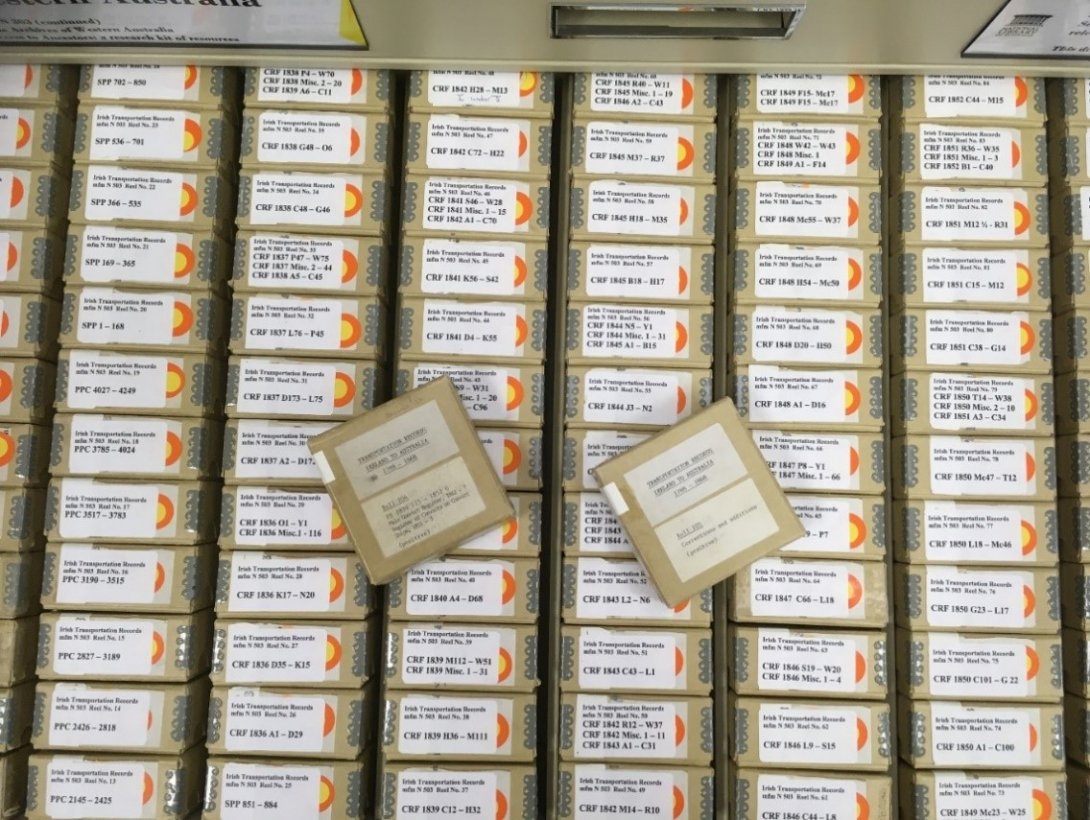
What's missing from the collection
Eagle-eyed readers may have noticed that the first series only covers a very brief period, 1836-57. Originally, this range extended back to the beginning of the transportation scheme but during the Irish Civil War, earlier records were tragically lost when the Irish Public Records Office housed at the Four Courts building in Dublin was destroyed.
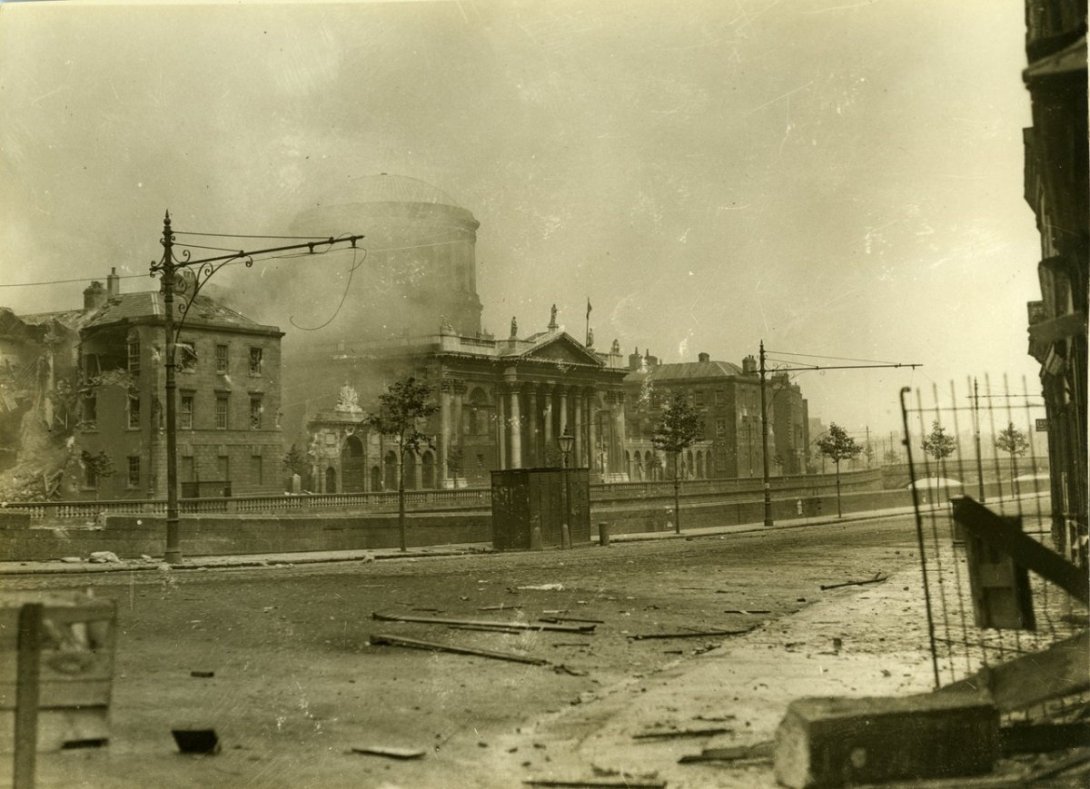
Although the transportation registers for the earlier years are lost, you may still be able to find a trace of your ancestors in the surviving petitions and convict reference files. These were normally written in the hope of obtaining clemency or a lighter sentence and can provide a unique point of view into the trials and lives of the convicts. As Rena Lohan points out in her very helpful article ‘Sources in the National Archives for research into the transportation of Irish convicts to Australia (1791–1853)’, there are petitions that indicate 'a very slight sprinkling of those who actually wanted to be transported as quickly as possible.' See for example the case of Mary Kilrea (PPC 1503) whose prayer to be taken as soon as possible is definitely not what we expect from the standard convict story:
'Would give such directions as you think most expedient on the subject in question to have petitioner removed and forwarded to her place of destination as speedy as possible.'
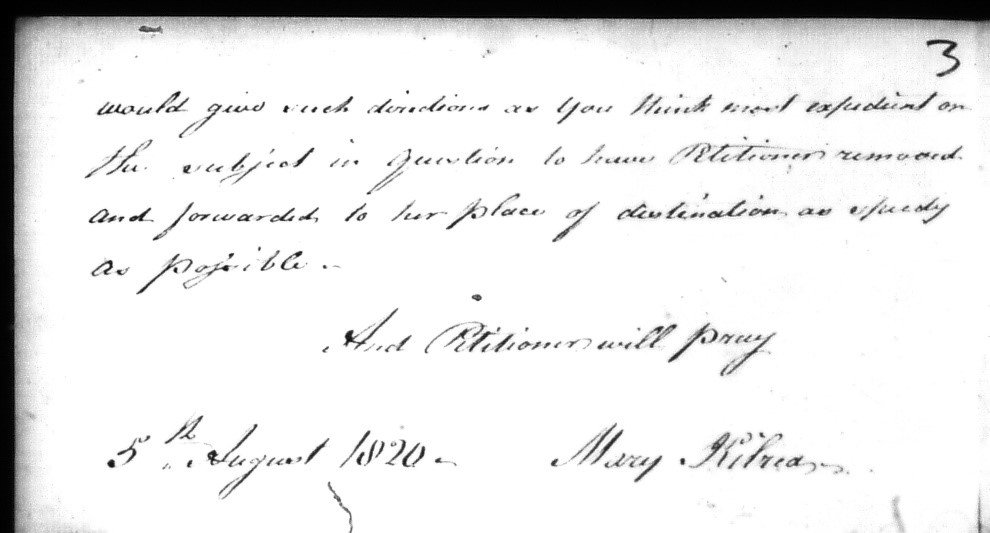
The last transported Irish convicts
You might have also noticed that the registers stop at 1857 even though the last ship of Irish convicts arrived in 1868. Between 1857 and 1868, it is believed that nobody who was convicted of committing a crime in Ireland was transported to Australia – those convicted in England on the other hand still faced transportation. The last convicts to be sent out were a group of Irish Fenians, an association of Irish militant nationalists determined to overthrow British rule, who were captured after a failed uprising in 1867.
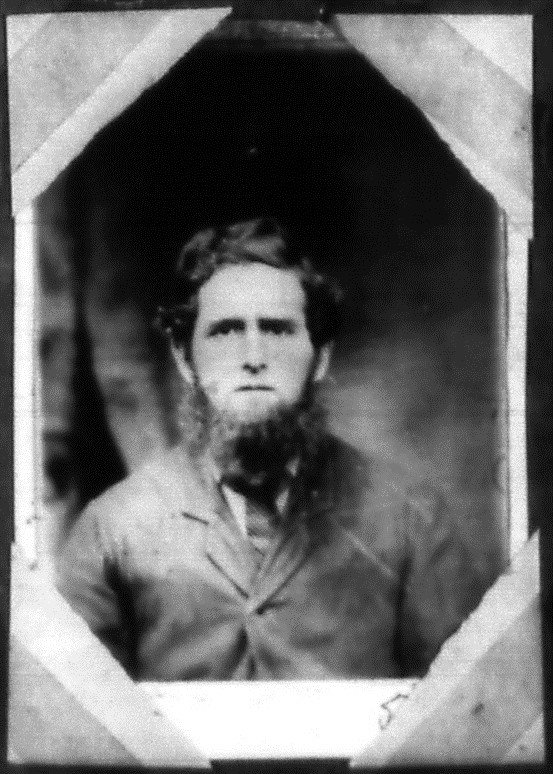
These men were convicted in Ireland but imprisoned in England and became the last Irish convicts to be transported to Australia in 1868. Interestingly the records concerning the Fenians also contain a small number of photographs that were included with the records. For more information about the other sections and a further breakdown of the records, you can find a descriptive list of the contents of each series in our Australian Joint Copying Project research guide.
Getting the records to the Library
The Irish Transportation Registers were deemed so significant that the Taoiseach, Prime Minister of Ireland, Charles J. Haughey presented the National Library and Prime Minister Bob Hawke with microfilm copies of the registers to mark the bicentenary of the First Fleet’s arrival. Fortunately, his speech, including the closing poem on Irish-Australian friendship, was preserved for posterity and can be requested from the catalogue to listen to in our Special Collections Reading Room. This generous donation is the reason you may see the collection referred to in various sources as the Irish Gift. The microfilm was then integrated into the AJCP M series, where it complements our holdings of other convict records.
As part of the Irish gift, the names appearing in the registers were indexed and made searchable through a cutting-edge state-of-the-art computer program that could be conveniently run off eight 5¼ floppy discs.
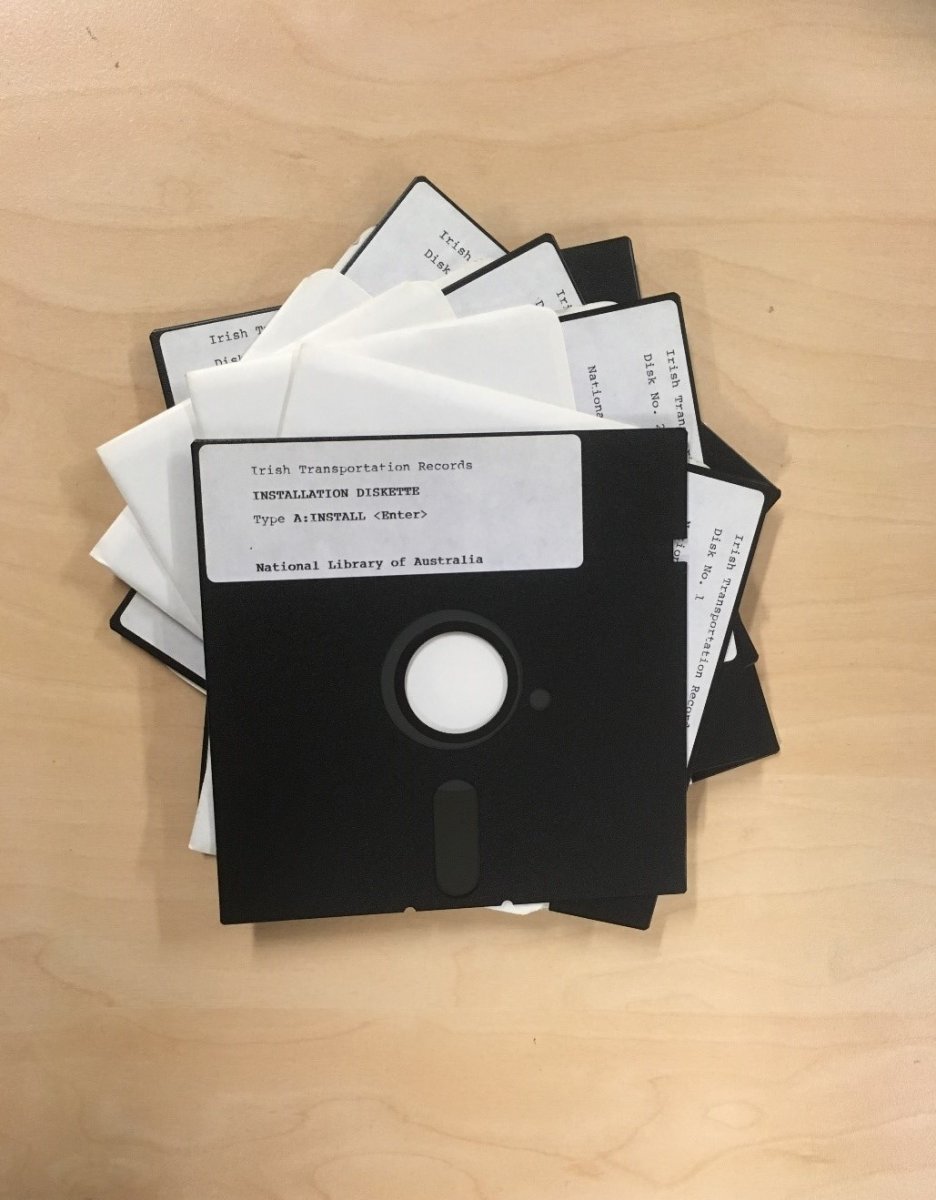
The pioneering index and microfilm featured as the core of the Library’s nationwide travelling exhibition The Harp and the Southern Cross.
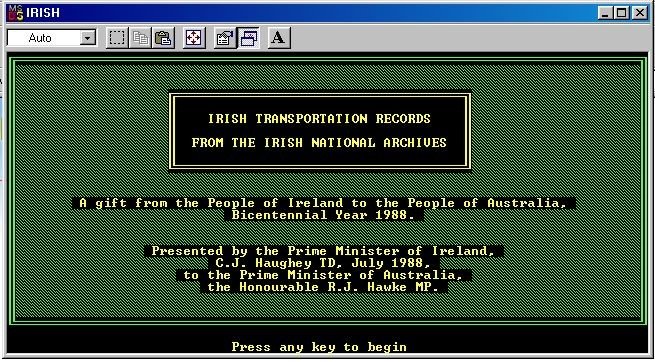
Fortunately for those of us without a floppy disc drive it is now much easier to search the index; all you need to do is visit the search portal at the National Archives of Ireland. Alternatively, you can see our Convict Trial Records page and follow the links to download the index as a PDF or as a CSV document. If your search for a name is successful in the database, the results will list a document reference. You can then use the descriptive list to work out which reel to consult in our Reading Rooms.
For example if you searched for ‘Eliza Brown’, one of the entries has the document reference PPC [Prisoners’ Petitions and Cases] 1442. Looking this up in the descriptive list reveals it is found on reel M2134. You can then scroll through to the petition 1442 and discover the full text. In this case Eliza hopes that:
'Your Honour will order her to be discharged or to send her of to Botany Bay immediately and relieve her of her present distressed situation for which petitioner shall forever pray.'
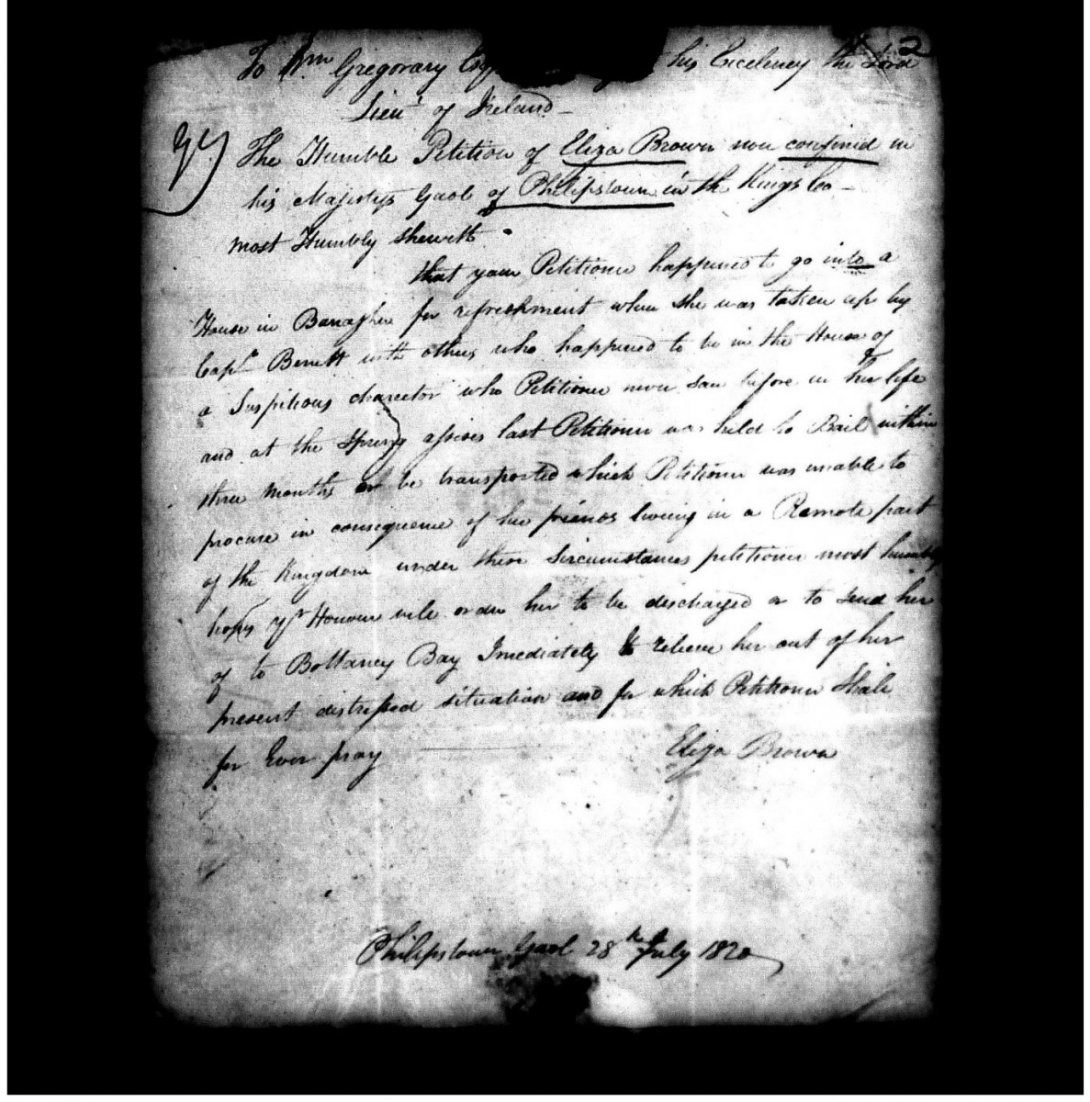
Continuing the groundbreaking work begun with compilation of the digital index and filming of records as part of the AJCP, the National Library has digitised all AJCP material including the Irish Transportation Registers. You can find more details in our blog Australian Joint Copying Project Reimagined. As a result, you can now search the online index and navigate to the digitised records from anywhere in the world.
So why not look-up your ancestor’s names – you never know what convicts and crimes could be hiding in your family history. Not sure where to start or need some tips to solve a convict conundrum? Make sure to read through our Family History research guides, and if you’re still stuck don’t hesitate to Ask a Librarian.
August is Family History Month. The Library has a vast collection of resources to help you start your family history journey. Over the course of the month, we’ll be sharing learning resources and interesting stories from our Library and Trove communities. Tune in here or join the conversation on Facebook and Twitter.